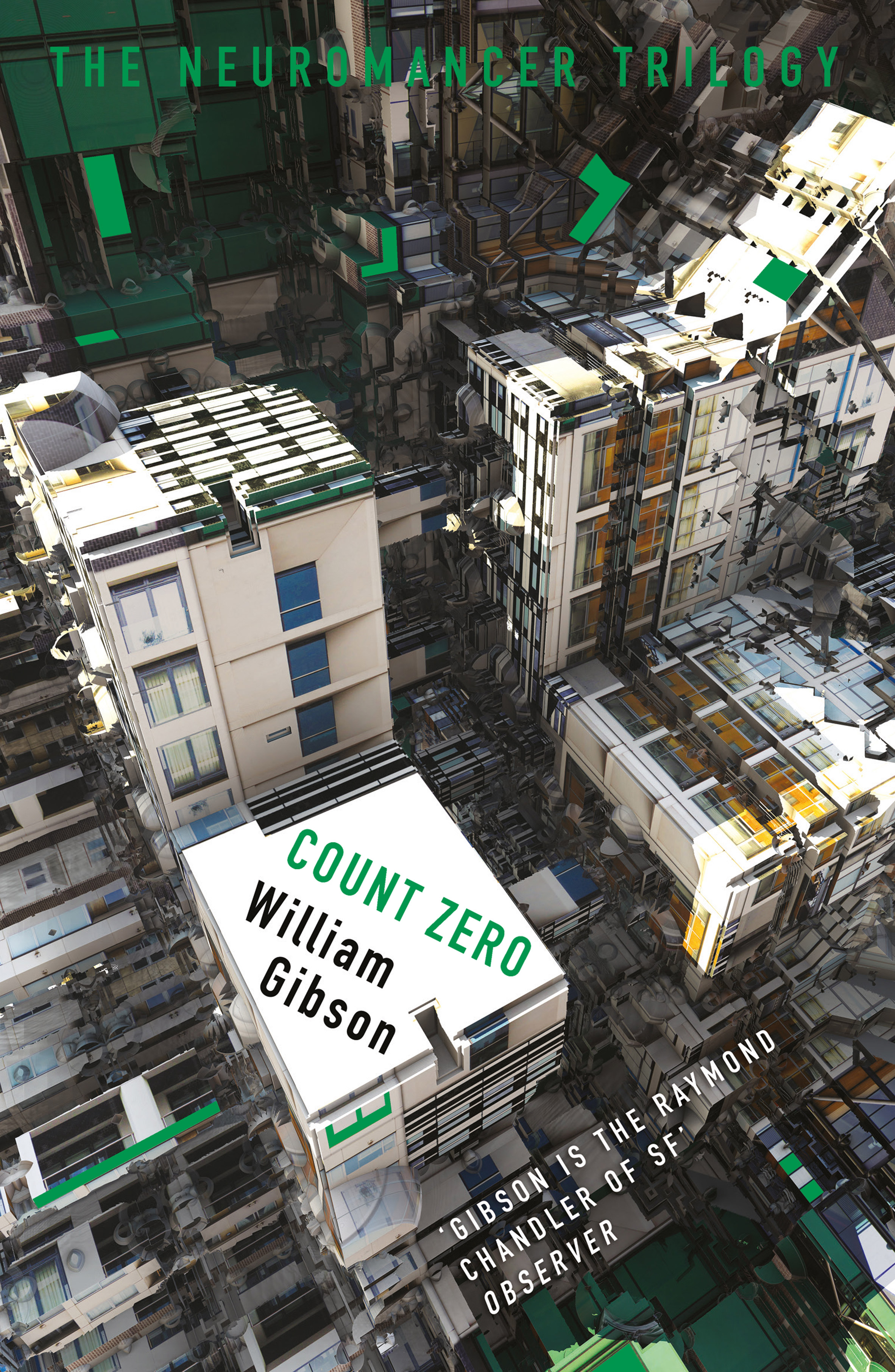Abstracted architecture graces new covers for William Gibson's dystopian novels

Inception-esque folded buildings feature on new book covers for the science-fiction novels of William Gibson.
Digital artist Daniel Brown put his own architecture photography through fractal mathematics software to generate the cover images.
The illustrations decorate the covers of four of Gibson's books ? three novels from the Sprawl trilogy and one collection of short fiction.
All three novels ? Neuromancer, Count Zero and Mona Lisa Overdrive ? take place in a dystopian, cyberpunk-inflected future, and Brown aimed to reflect this setting in his covers.
London-based Brown ? an artist, designer and programmer ? achieved the abstracted look of the covers by using fractal mathematics.
The design method involves repeating an image over and over at varying scales to create a never-ending, complex pattern.
Brown used computer software to apply this method to images from his architectural photography portfolio.
The designer says he was personally approached by Gibson to create the cover designs for the books, which have been recently acquired by science-fiction publisher Gollancz, an imprint of Orion.
"I had been experimenting with generating architecture via computer code," said Brown on the Gollancz blog. "As a project it was still in its infancy and without real purpose."
"Then William Gibson contacted me, and stated it was exactly how he had envisaged The Sprawl. In an uncanny way the code found its own purpose."
...
| -------------------------------- |
| Yuri Suzuki designs The Ambient Machine to function as a "sound conditioner" |
|
|
Villa M by Pierattelli Architetture Modernizes 1950s Florence Estate
31-10-2024 07:22 - (
Architecture )
Kent Avenue Penthouse Merges Industrial and Minimalist Styles
31-10-2024 07:22 - (
Architecture )






